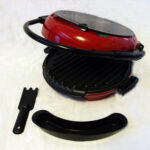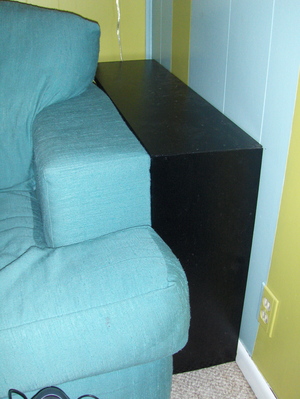Droughts, fire bans and dry spells don’t last forever. Build your own fire pit and be ready to entertain outside, keeping toasty warm and roasting a marshmallow or two.
Check with your local building codes office. Plan to build your pit the proper distance from the house or other structures, away from fences, trees or other buildings.
Just imagine those spring, summer and fall days or nights to come, watching the fire, talking with friends, or laying a barbeque grill over the pit and having dinner.
It does take some work and effort to build a pit. All the tools and materials you need are available at local DIY stores. For tools you might not use much, such as a tamper, rent them as needed from the DIY store or rental shop.
You will need:
- One 2- foot level and a 4-foot level
- Masonry blocks- preferably interlocking (look in the area for building retaining walls)
- Pea gravel
- ¾ inch drainage gravel
- Brick hammer and cold chisel
- Spade and hoe
- Steel rake
- Mallet
- Caulk gun and masonry adhesive
- Trowel
- Power grinder with diamond blade (if using natural stone cap blocks)
- Capstones
- Steel campfire ring (find in DIY stores or online)
- Stone dust, also known as patio base
- Ready-mix mortar
- Concrete bonding adhesive
The walls of the pit must begin below ground level for stability, and reach at least a foot above the ground or more according to local codes. Most pits are between 36 and 44 inches wide, which allows people to be close. This won’t allow bonfires, however.
Use a campfire grill over your pit for barbequing. Instead of charcoal, the taste from wood fires is unparalleled.
Be sure to follow all the rules and ordinances set by your local codes.
When using power tools or masonry chisels, use the proper safety gear.
Call your local utility company to locate water, sewer, phone and power lines before you dig anywhere.
For this article, stone blocks and concrete blocks are the same thing. They are sold under the same names in DIY stores.
Read the directions first before purchasing or renting tools. You may not need everything listed above. It will depend on whether you are using masonry stone blocks or natural stones for the caps.
Step One:
Choose the spot for your pit, mark a circle and set your stones in the marks. If any stones need to be cut, mark them and set them aside for now. For cutting stone blocks,
Make plans for digging. Plan ahead for the displaced soil. Move any decorative plants, toss grass on the compost pile, root side up.
Dig at least six inches wider than your pit’s design. This allows you to work in the space with some comfort.
Your hole should be at least at least six inches deep in the middle. The outside of the ring (remember you’re digging wider so you can work comfortably), should have a twelve inch deep trench the width of one block. This trench will house the block wall.
Ensure the trench floor and center floor is level. If the pit is dug into a slope, it will look strange at first to the eye, but use the levels to make sure.
Step Two:
Once the trench and center are level, fill the trench with six inches of gravel. Use the hand tamper to compact the gravel. You’ll need to add gravel as you go to keep the gravel and trench level. The stability of the whole pit rests on this trench.
Step Three:
Lay the first course of stones. If you’re using interlocking stones, use the wide end of the brick hammer to remove the lip at the bottom. They must lie flat. If a stone is too low, use stone dust to raise it up.
Frequently check for level, using the mallet to tap the stones in place. The stones must be set exactly. A gap now produces a bigger gap later.
You may decide to cut the sides of the stones so all the edges touch and create a stone circle. That may sound like extra work, but it will pay off in the end.
Step Four:
Dry fit the second course of stones on top of the base ring. If any stones need to be cut, now is the time. Check for level. Cut any stone that needs it. Set all stones aside (I’d place them in a ring around the pit so I could grab them).
Since masonry adhesive sets up quickly, work on a couple of stones at a time.
Spread a zigzag pattern of masonry adhesive on two stones, and set two stones on top, making sure the lip of the blocks is set against the base edge. Off set the seams for added strength to the wall. For example, the center of one block should sit on the seam over the two blocks below.
Use the mallet to help set the last stone in place. Allow the masonry adhesive to set up according to the manufacturer’s directions.
Step Five:
Fill the inside pit with six inches of gravel. This does not need to be tamped down. It will help support the first and second courses.
Set the third and fourth courses as you did the first.
Step Six:
Insert the campfire ring, making sure it lays against the stones. This ring keeps your stones safe from the fire. Since they’re not fire rated, they would dry out and crumble, destroying all your work. It’s essential to your fire pit.
It should sit even with the top of the fourth course wall. Any spaces between the ring and wall should be filled with gravel.
Step Seven:
Almost there. Now is the time for the cap blocks. As you’ve done before, select your cap blocks and arrange on the top of the wall. If any blocks need to be cut, “now’s da’ time.”
If you’re using natural stone, overlap the edges and mark the overlap. Use a diamond blade in the grinder to score the stones for cutting with the cold chisel.
There are two ways to set the capstones:
Masonry stone blocks- use the mortar adhesive.
Natural stone- mix the dry mortar with bonding additive to make a “peanut butter- like consistency.
Using the trowel, lay a thick base on top of the fourth course, smooth it out and score it with the trowel. Push the first stone into the mortar, setting in place. Use the trowel to remove any squeezed out excess. Continue setting the rest of the stones.
Ensure the capstones are level with the mallet and 4-foot level.
You should wait at least two days before lighting a fire.
Your pit is now finished. Fill with wood, light up and enjoy. I would place a steel grate (or cut one with the grinder) to fit inside the pit on top of the gravel base. This would allow for charcoal and ash cleanup later.
If your local ordinance or area has a fire ban in place, assure your local code inspector or building permit office (if you need a permit, get one), that no fires will be lit during the period. You want to build this to be ready when it’s lifted.
During this period, you could also use it to hold plants in containers. The gravel provides a perfect drainage area. If you decide not to use it as a fire pit, fill with potting soil and grow a garden.
How to cut a stone block:
Using the brick hammer, score a mark all the way around the stone. Place the stone on a level surface. Holding the cold chisel straight up, strike it with the mallet until the stone splits in two. The chisel should be inside the score mark. Clean up jagged edges with the flat side of the brick hammer.
Source: Harry Sawyers, “How to Build a Fire Pit,” This Old House Website, no date given





